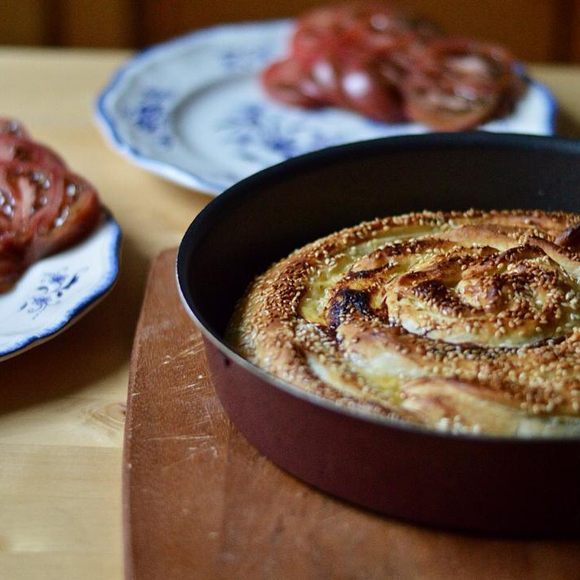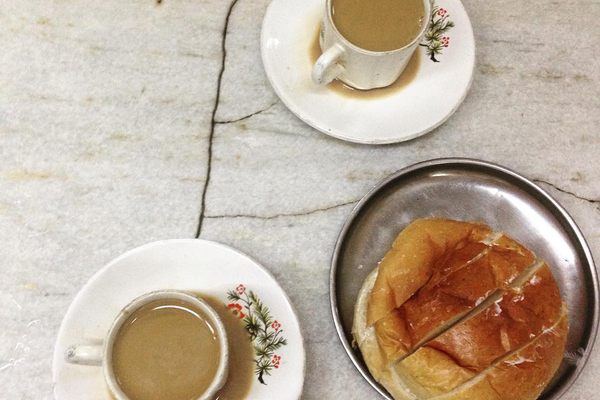Prepared Foods
Zelnik
This spiraled Balkan pastry requires painstakingly rolling dough into silky sheets.
It takes an exquisite hand to achieve the diaphanous dough needed to make zelnik. In Macedonia, this savory pastry’s ancestral home, children learning to make it spend years practicing under the guidance of family experts.
The name zelnik comes from the word zelje, which means “leafy greens,” and is the pastry’s most traditional filling, along with sirene, a regional brined cheese similar to feta. To achieve a light, puffy crust, zelnik bakers search out pastry flour of the lightest, smallest grain possible. After sifting the flour and mixing with eggs, water, oil, and sometimes vinegar, they knead the dough and leave it to rest. Meanwhile, they prepare leeks or other fillings. Once the dough has rested, they can begin the difficult process of laminating (the process of rolling, pressing, and folding butter between layers of dough).
Rather than a traditional rolling pin, zelnik makers use a long, thin dowel to roll and stretch the dough as thin as possible. A well-executed pastry should blanket the table like a translucent sheet of chiffon. At that point, it can be filled with leeks, ground meat, or other vegetables, and delicately shaped before it is baked. The best zelniks are often formed into a spiral, with a well of greens at the center and a sprinkling of sesame seeds on top. The finished product is typically served warm with a glass of kefir, or drinking yogurt.
Round or rectangular, flat or spiraled, flaky or moist, in the end, each zelnik has the subtle signature of the person who made it—so it pays to remember grandma’s characteristic features.
Written By
 Leigh ChavezBush
Leigh ChavezBush
















